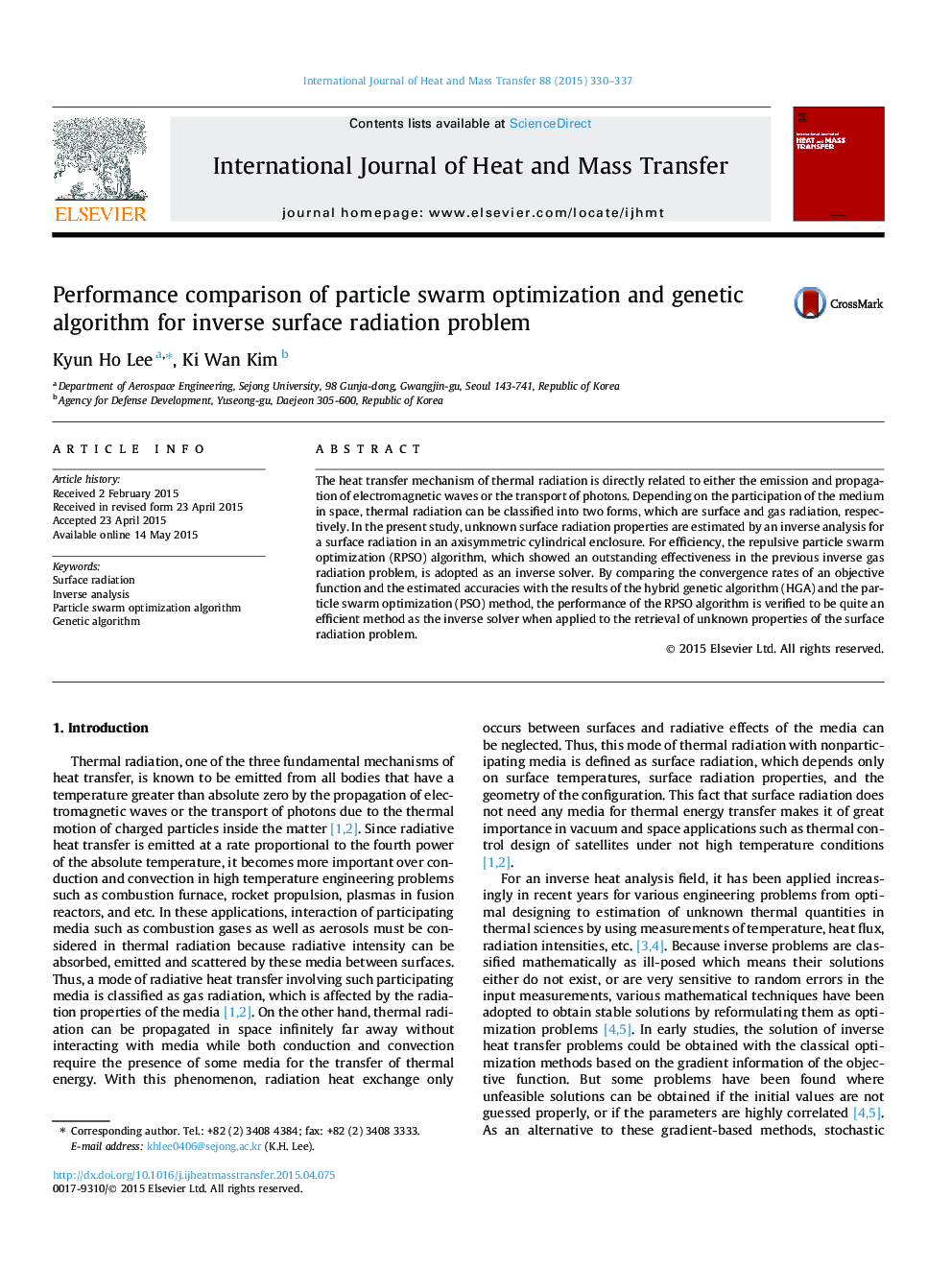| Article ID | Journal | Published Year | Pages | File Type |
|---|---|---|---|---|
| 657027 | International Journal of Heat and Mass Transfer | 2015 | 8 Pages |
•An inverse surface radiation problem in an axisymmetric cylindrical enclosure with nonparticipating media is considered.•Simultaneous estimations of surface temperatures and surface emissivities.•Implementation particle swarm optimization (PSO) algorithms for inverse surface radiation problem.•Comparison of performances with hybrid genetic algorithm (HGA).•The overall results show that RPSO outperforms PSO and HGA efficiently in the inverse surface radiation problem.
The heat transfer mechanism of thermal radiation is directly related to either the emission and propagation of electromagnetic waves or the transport of photons. Depending on the participation of the medium in space, thermal radiation can be classified into two forms, which are surface and gas radiation, respectively. In the present study, unknown surface radiation properties are estimated by an inverse analysis for a surface radiation in an axisymmetric cylindrical enclosure. For efficiency, the repulsive particle swarm optimization (RPSO) algorithm, which showed an outstanding effectiveness in the previous inverse gas radiation problem, is adopted as an inverse solver. By comparing the convergence rates of an objective function and the estimated accuracies with the results of the hybrid genetic algorithm (HGA) and the particle swarm optimization (PSO) method, the performance of the RPSO algorithm is verified to be quite an efficient method as the inverse solver when applied to the retrieval of unknown properties of the surface radiation problem.
